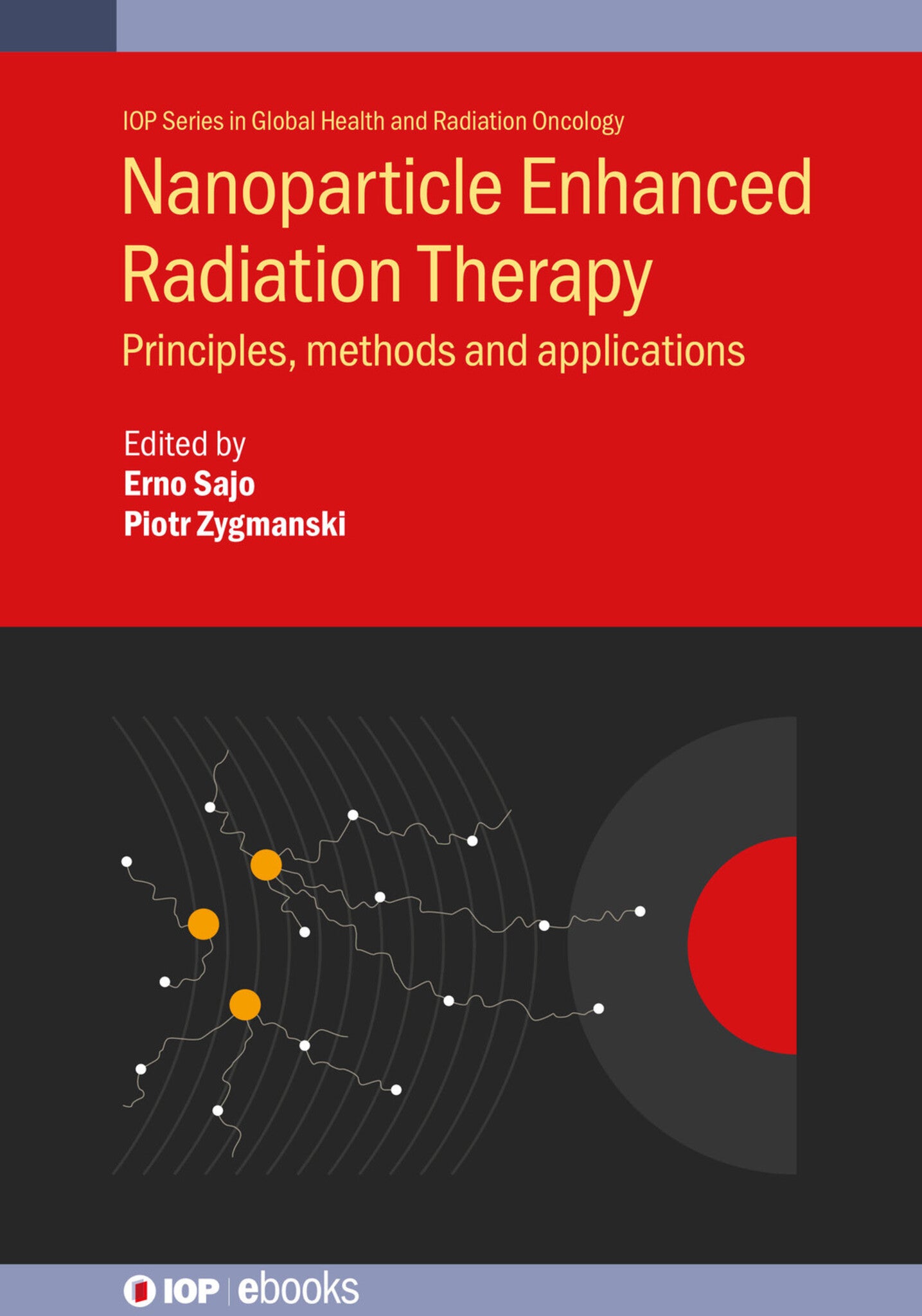We're sorry. An error has occurred
Please cancel or retry.
Nanoparticle Enhanced Radiation Therapy

Some error occured while loading the Quick View. Please close the Quick View and try reloading the page.
Couldn't load pickup availability
- Format:
-
12 November 2020

Improved targeting of abnormal cells and tissue in the radiotherapy of cancer has been a long-standing goal of researchers. The central purpose of nanoparticle-enhanced radiotherapy (NPRT) is to more precisely control where the radiation dose is delivered, desirably with subcellular precision, provided we can find a method to bring the nanoparticles to target as well as control their concentration and size distribution.
The contents within this book will cover the rationale and fundamental principles of NPRT, optimal nanoparticle sizes, concentrations, design and fabrication, effective nanoparticle delivery methods, emerging clinical applications of NRT modalities, treatment planning and quality assurance and the potential of NPRT in global health. This volume will serve as a resource for researchers, educators and industry, and as a practical guide or comprehensive reference for students, research trainees and others working in cancer nanomedicine.
Key Features
- Covers the most important advances in nanoparticle-aided radiation therapy over the last few decades
- Features contributions from leaders in the field
- Focuses first on the fundamentals of radiosensitization, then it continues with imaging methods and concludes with various clinical applications

MEDICAL / Radiology, Radiotherapy & Nuclear Medicine, Radiotherapy

Chapter 4 - Financial support was provided by the Canadian Institute of Health Research (PJT-162325), the Natural Sciences and Engineering Research Council of Canada (NSERC), National Key Technologies R & D Program of China (2014BAC13B03), the State Key Laboratory of Photocatalysis on Energy and Environment (SKLPEE-2017B03) and the National Natural Science Foundation of China (21673044).
Chapter 11 - The work was supported by the Heidelberg University Mobility Grant for International Research Cooperation within the excellence initiative II of the Deutsche Forschungsgemeinschaft (DFG), and by the Mobility project DAAD-19-03 to Michael Hausmann.
Chapter 15 - This study was supported by National Institutes of Health NationalCancer Institute grant 1 K01 CA172478-01
Introduction
Part I Radiosensitization and fundamentals
1 The role of Auger electrons versus photoelectrons in nanoparticle dose enhancement
2 Deterministic computation benchmarks of nanoparticle dose enhancement—part I. Nanometer scales
3 Deterministic computation benchmarks of nanoparticle dose enhancement—part II. Microscopic to macroscopic scales
4 Mechanisms of low energy electron interactions with biomolecules: relationship to gold nanoparticle radiosensitization
5 Monte Carlo models of electron transport for dose-enhancement calculations in nanoparticle-aided radiotherapy
6 Nanoparticle-aided radiation therapy: challenges of treatment planning
7 Nanoparticle aided radiotherapy: quality assurance perspective
8 Optimal nanoparticle concentrations, toxicity and safety and gold nanoparticle design for radiation therapy applications
9 Translational nanomaterials for cancer radiation therapy
10 Gold nanoparticle enhanced radiosensitivity of cells: considerations and contradictions from model systems and basic investigations of cell damaging for radiation therapy
Part II Imaging
11 Super-resolution microscopy of nanogold-labelling
12 X-ray based nanoparticle imaging
13 MRI based nanoparticle imaging
14 Nanoparticle detection using photoacoustic imaging (PAI)
Part III Applications
15 Radiotherapy application with in situ dose-painting (RAiD) via inhalation delivery
16 High-Z ORAYA therapy for wet AMD and ocular cancers
17 Cerium oxide and titanium dioxide
18 Accelerated Partial Breast Irradiation (APBI)



